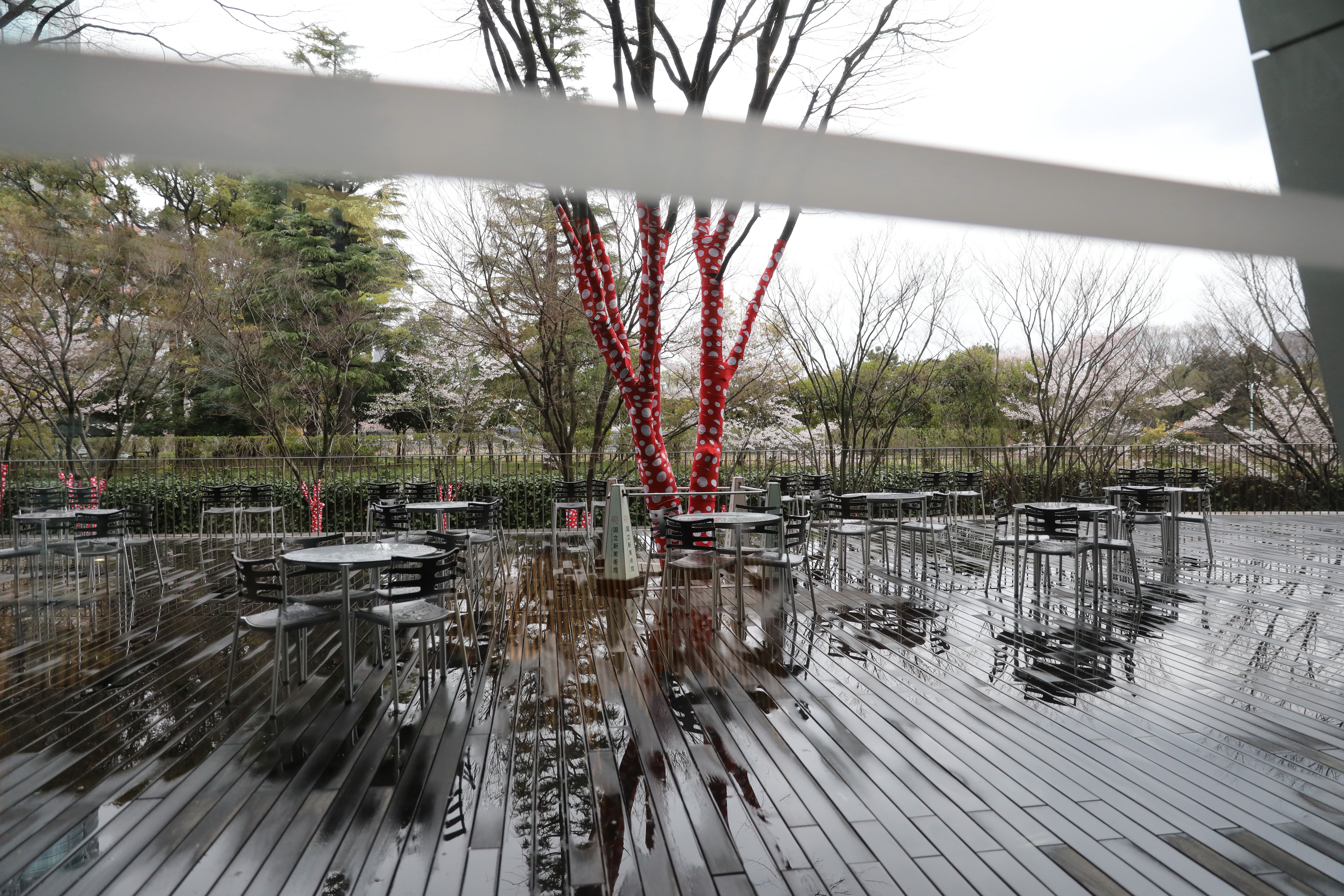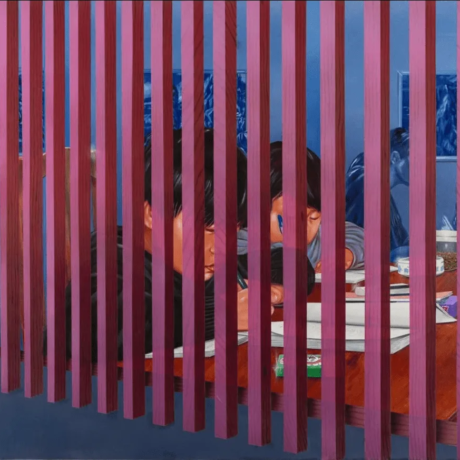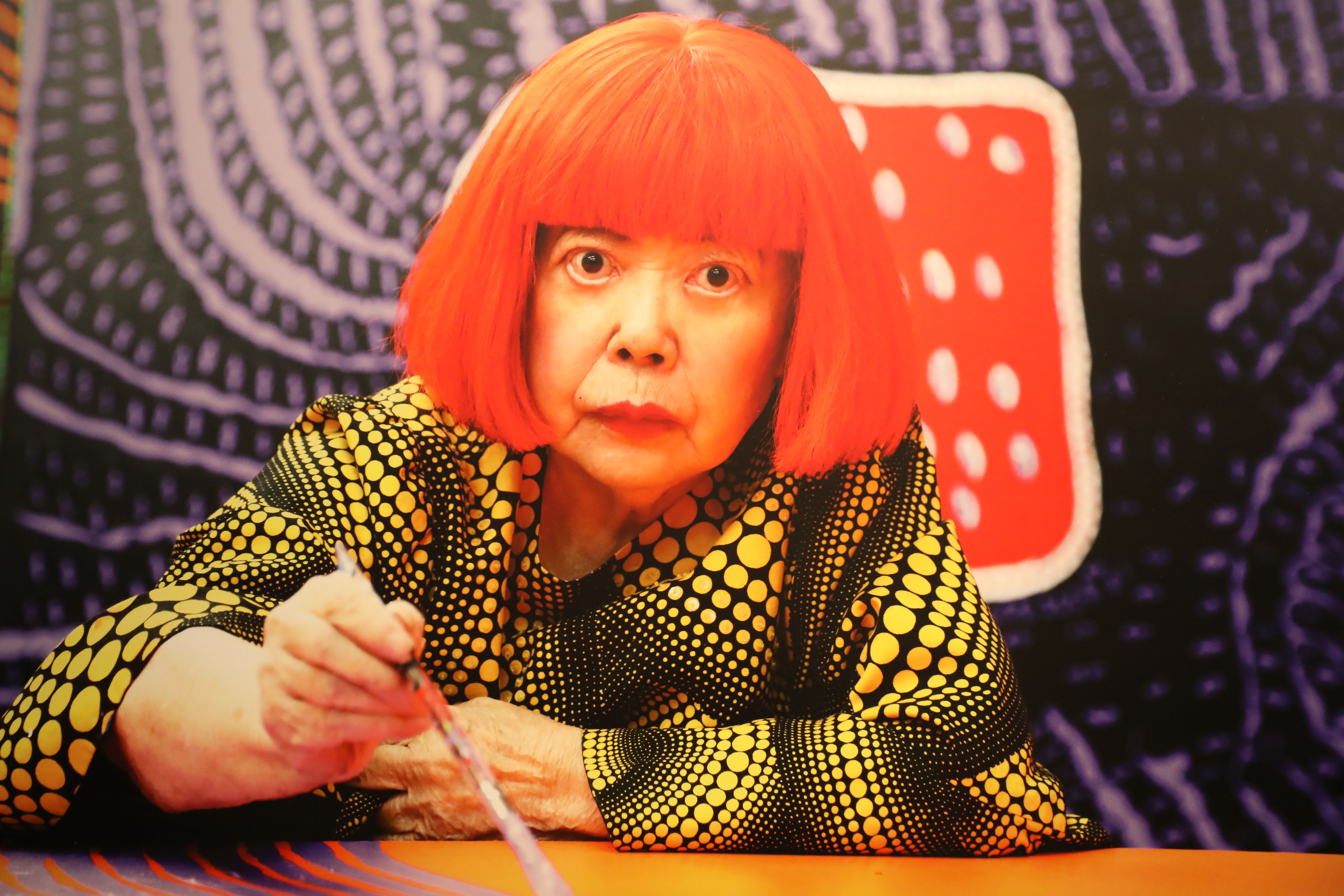
On a rainy day in Tokyo, I visit Yayoi Kusama: My Eternal Soul at the National Art Centre that is effortlessly reachable by an elevator and stairs from the underground station. Upon approaching the museum, there is no need of sheltering from the rain since a large glass roof offers full coverage. I place my umbrella in a Tokyo style umbrella locker and continue to walk towards the entrance of the museum.
As I approach the entrance of the exhibition inside the uniquely curvy National Art Centre’s building, the large crowd makes me realise the popularity of the show among the young Japanese. A more careful look reveals that the exhibition, curated by Yusuke Minami, has in fact been designed specifically for the local public, with audio guides and explanatory material offered exclusively in Japanese. The artworks exhibited are also mainly on loan from Japanese museums and the artist’s personal collection in Tokyo. The exhibition is the first comprehensive survey of the 88-year-old Yayoi Kusama in Japan. It showcases the current popularity and recognition of Kusama’s art in her native country that has remarkably developed in the last decade. The turning point of her stellar international career was to represent the Japanese pavilion with a solo show at the 45th Venice Biennale in 1993. From then onwards, the artist’s work gained international recognition and was represented in renowned private galleries such as Ota Gallery in Tokyo, Victoria Miro in London and David Zwirner in New York.
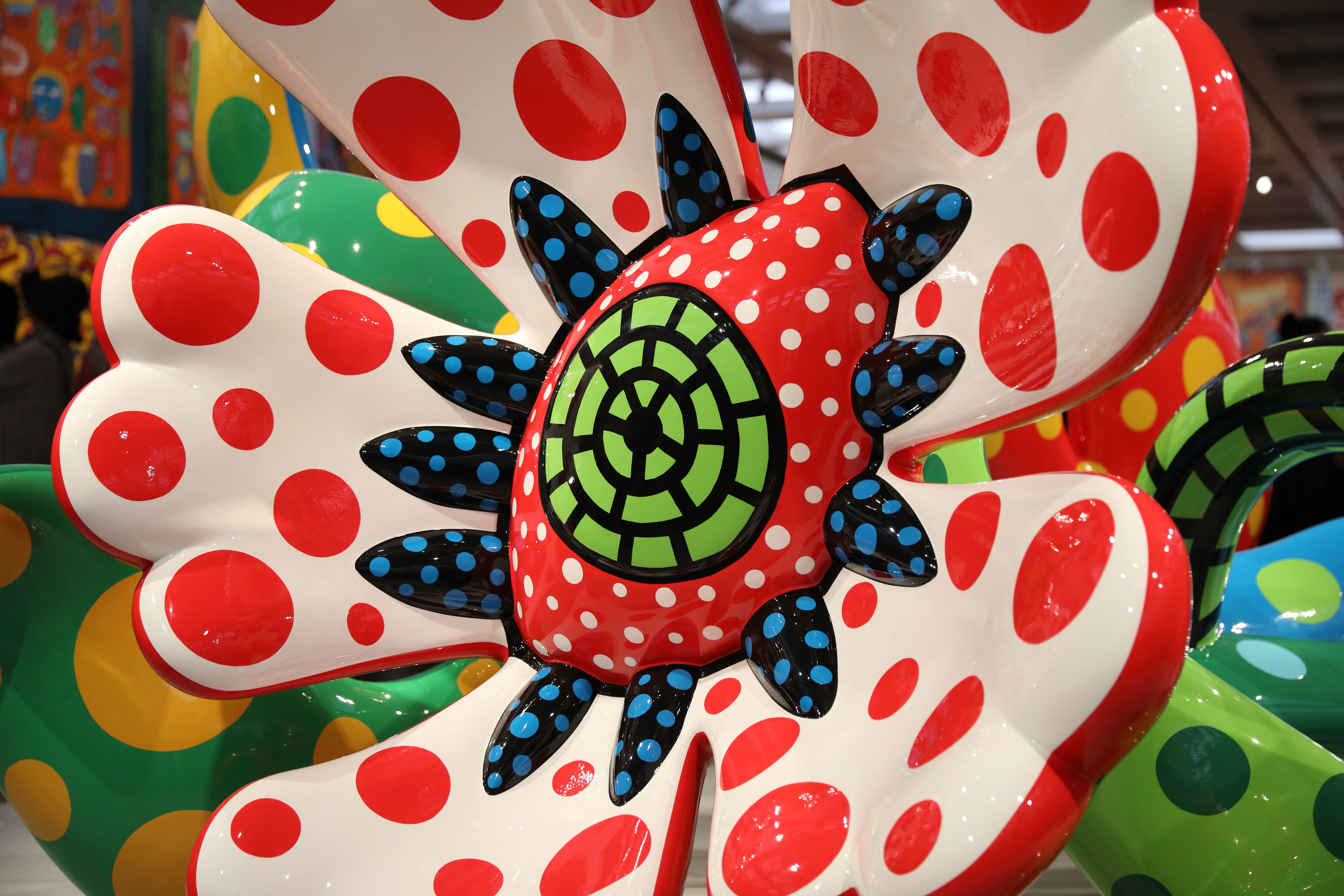
The opening room of the exhibition entitled Kusama in the 21st Century is strikingly eye-catching, a massive space filled with five hundred colourful paintings from the ongoing series My Eternal Soul. The room creates an overwhelming sensation of diversity that is a tribute to the artist’s latest works. The paintings resemble one another, but they nonetheless differ in colour and elementary patterns that depict eyes, cell structures, faces, marks and dots. The colours are vivid monochrome blue, orange, red, yellow and green. Inexplicably, they recall aboriginal art. In the middle of the gigantic room, there are three visually powerful installations from the mixed media Flowers That Bloom series. They are perfect catalysts for selfies, and snap-photography from the exhibition keeps appearing on Twitter and Instagram, they are colourful and playful, with unnatural shapes and enigmatic meanings.
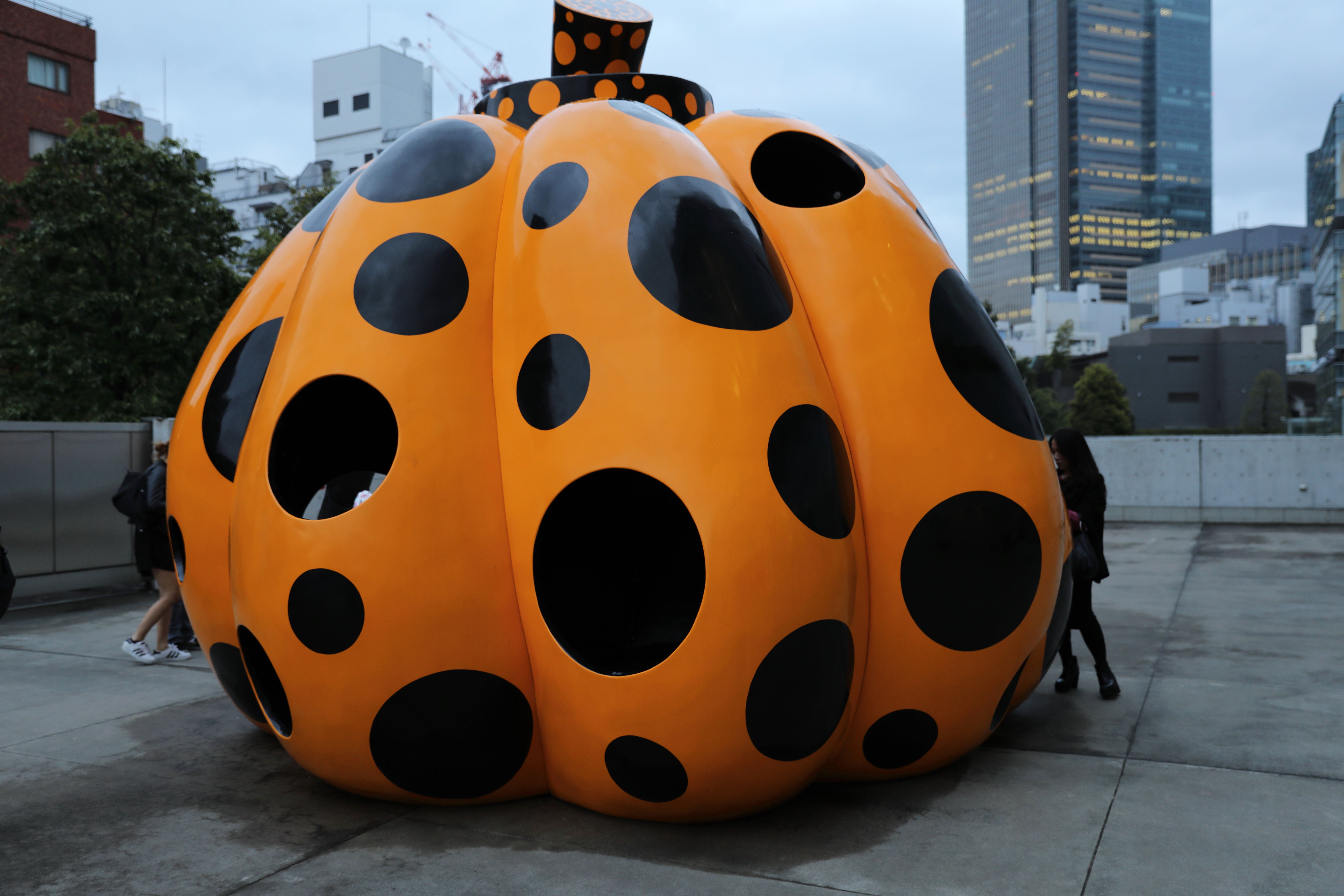
In the second room entitled Kusama in Matsumoto, there are a selected number of works from the artist’s early years, produced while she was living in her hometown Matsumoto until 1957 when she left for New York. Despite the limited production of this initial phase of her career, it becomes evident that some of the iconic and recurrent themes like the polka dots were already present in Kusama’s body of works since the outset of her artistic career. The third room entitled Kusama in New York displays works made during the period 1957-1973 when Kusama struggled to make a living as an artist in New York. It was a period of hard work and personal exhaustion. During the time, the artist produced some of the most defining and well-received series of paintings of her artistic career. The pieces Infinity Nets, Untitled (No. White A.Z.) (1958-59), No.AB, (1959) and No.H.Red, (1961) are among the more representative pieces on display in the exhibition. Works from this series were commercially successful and sold for hefty prices at auctions in New York and London in recent years. Representative of the time in New York are some of the phallic sculptures on show, as well the experimental film Kusama’s Self Obliteration, (1967) that reminds the public of the tremendous efforts and creativity Kusama deployed in performances. In this series, the artist appears in the process of painting human bodies with polka dots or covering them with green leaves. The hard work challenged her mental state, she decided to return to Japan in 1973 and voluntarily check into a hospital where she reached balance and still lives.
In the fourth room entitled Kusama in the 21st Century, the mesmerising Infinity Mirrored Room – Filled with the Brilliance of Life (2011) takes centre stage among other recent and less known works such as mixed media Pumpkin, 2016 and Dots Obsession, 2017. The work from the Infinity Room series of installations projects the audience into a new world of infinite dots in the dark. Finally, the fifth room entitled Kusama in Tokyo 1973-2000 closes the exhibition with the painting A Pumpkin (1999) which is probably one of Kusama’s most iconic and identifying themes in her prolific career. The gigantic painting of a pumpkin afflicted by holes resembles the early polka dots and the style that characterised Kusama’s artistic production for the past three decades. A similar piece sold for over eight million dollars at auction in recent years.
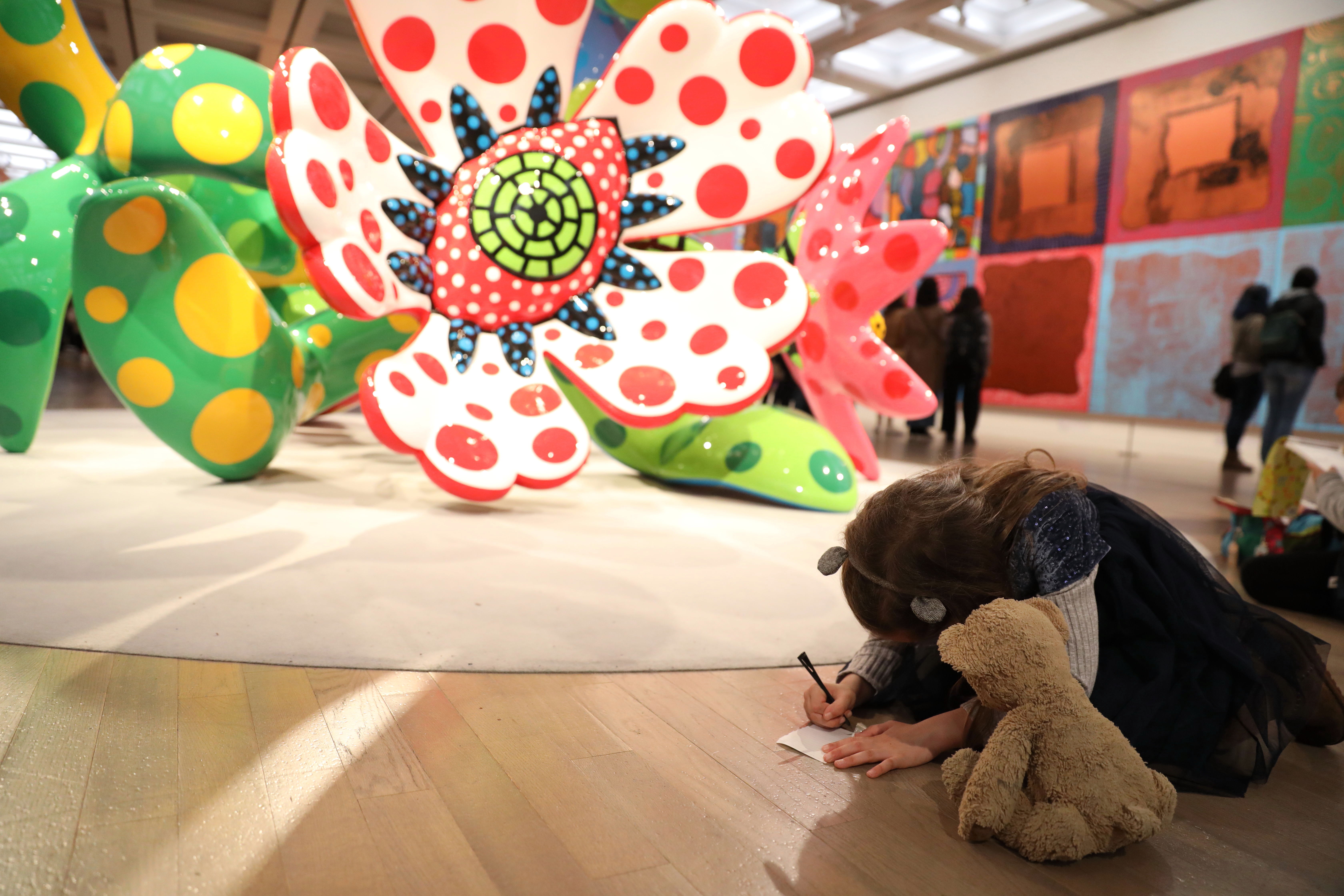
Outside the galleries, in the terrace space of the National Art Centre, some of the most significant and recognisable installations of Kusama are made accessible to the wider public. On display are the large mixed media yellow sculpture Pumpkin (2007), the beautiful Narcissus Garden (1966-2017), that is an installation of numerous iron silver balls laid on the floor, and the Ascension of Polkadots on the Trees (2017) that consists of covering the trunk of trees with a red and white polka dots fabric. These works showcase the impressive artistic career of Kusama’s that steadily developed over decades of unabated artistic production and personal struggles.
The exhibition closes on the 22 May and it offers a unique opportunity to a predominately Japanese audience to enjoy a glimpse of Kusama’s acclaimed production that spans across seventy years of prolific artistic activity. The works shown are not all visually attractive, but they reflect deeply the artist’s imagination, as only an outsider in her own country such as Kusama could have achieved. Her art is her life and her legacy, and this exhibition intends to make a statement about her legacy in the contemporary Japanese art scene that will likely last forever.
‘Yayoi Kusama: My Eternal Soul’ runs until 22 May at the National Art Centre, Tokyo. nact.jp
